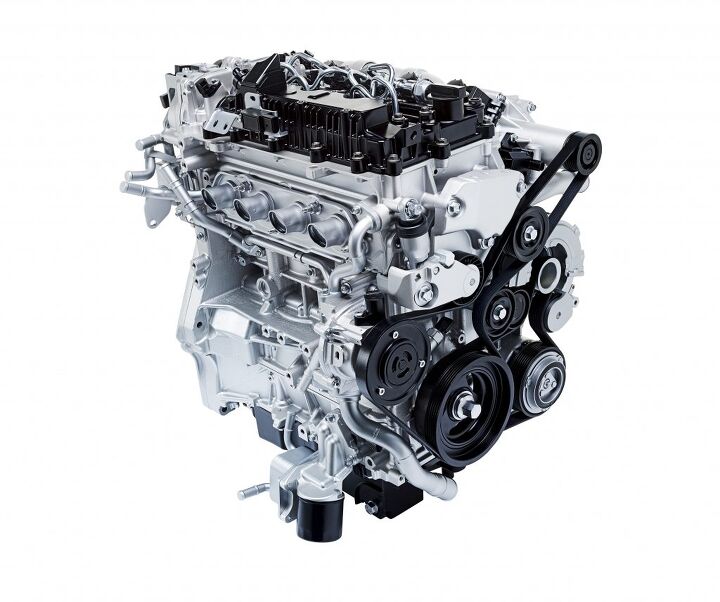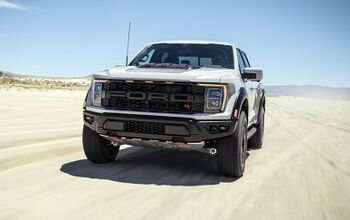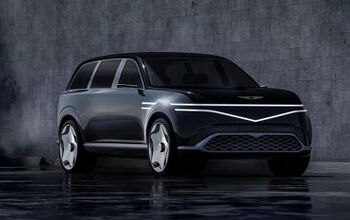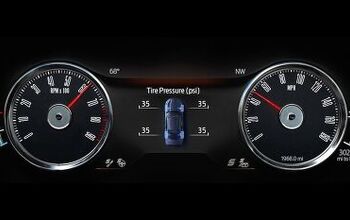Mazda's U.S. Skyactiv-X Arrival Definitely Delayed

While other manufacturers are downsizing engines and sticking turbos anywhere they’ll fit, Mazda has attempted to maintain a home for naturally aspirated motors — engines it believes should be sized appropriately for their intended application. On paper, this appears to be giving the competition an edge. Yet Mazda remains committed to offering the right tool for the job, introducing naturally aspirated Skyactiv engines with unusually high compression ratios. The latest, Skyactiv-X, combines spark-controlled gasoline combustion and compression-ignition diesel tech with a 24-volt mild-hybrid system.
The system delivers 178 horsepower and 164 lb-ft of torque in 2.0-liter guise, plus MPG improvements of up to 20 percent vs the old Skyactiv-G. But there’s a problem. With Mazda attempting to go upmarket, an economy-focused powertrain has to deliver in whatever region it’s sold, and introductory Skyactiv-X units are now viewed as too small for the United States. The result? The technology’s delayed arrival in North America, despite its deployment via the new 2.0 liter found in the 2020 Mazda 3 and CX-30 sold in Japan and Europe.
Eiji Nakai, Mazda’s executive officer for powertrain development, said as much to Automotive News. “We think this Skyactiv-X can be used for larger engine displacement in the future, in line with our product planning,” he explained. “This technology is applicable to other engine displacements.”
U.S.-spec Mazdas will continue utilizing the old 2.5-liter mill in lieu of the 2.0-liter Skyactiv-X, though Nakai said the manufacturer is already running simulations to assess how the latest Skyactiv technology would perform on engines with larger displacements.
Mazda engineer Yoshiaki Yamane believed such units would be better suited to American driving habits, where drivers tend to prioritize power for longer-distance expressway driving at the expense of maximizing their fuel economy. It’s not that the U.S. doesn’t appreciate high mpg estimates — quite the contrary, it’s just not in the habit of making that a keystone of any automotive purchase. “Maybe U.S. customers require more power, because fuel economy is not the top requirement,” Yamane mused correctly.
From Automotive News:
Mazda is developing a new large-vehicle architecture that will arrive in the fiscal year ending March 31, 2023. That platform is expected to accommodate a larger-displacement Skyactiv-X engine.
Skyactiv-X represents Mazda’s push to develop a more fuel-efficient, yet spunky, engine line.
It harnesses a technology Mazda calls spark-controlled compression ignition, which blends the fuel economy of a gasoline engine with the power of a diesel. Mazda says Skyactiv-X technology delivers sizable improvements in fuel economy and torque, along with smoother acceleration.
While TTAC garnered some face time with a Mazda3 Skyactiv-X prototype and has gone into great detail as to how the new motor works, we also knew it’s entry to the U.S. was probably going to be delayed. Mazda has been very careful not to promise anything, instead expressing a desire to make the technology global by rolling out versions that are best suited to specific regions. For the United States, that means the 186 horsepower/186 lb-ft of torque 2.5-liter unit carries over. Meanwhile, Canadian shoppers continue to have access to the old 2.0-liter Skyactiv-G making 155 hp and 150 lb-ft, plus additional transmission options.
Pricing is another issue. In the Japanese market, the Mazda 3 with Skyactiv-X is now the most-popular powertrain on offer. It stickers 27 percent higher than the base 2.0-liter Skyactiv-G gasoline engine, offering a 9 percent improvement in fuel economy and a 15 percent increase in overall horsepower. North American customers might it find harder to rationalize spending more on a vehicle who’s party piece is slightly improved overall efficiency — especially when that money could be used to buy something larger and more powerful.
Unfortunately, Skyactiv-X simply requires too much fancy hardware to be sold for less. In addition to all the trick compression, spark and hybrid stuff, there’s also a supercharger. The unit, however, is not responsible for boosting power — it’s just there to help lean out the motor, which is how Mazda can continue to claim it’s providing “naturally aspirated” engines.
No one reviewing them seems to mind. Outside of a few diesel-like startup sounds, there’s not much to give away Skyactiv-X as anything abnormal. We’re not gobsmacked that it has become the dominant powertrain option (for the Mazda 3) in Japan. But does it make sense for the automaker to chase down complicated Skyactiv technologies when the rest of the industry is running with small-displacement turbos and widespread electrification?
Mazda thinks so. It believes it can do more in the short term by promoting exceptionally efficient motors, generating more market appeal than present-day EVs. But Mazda has also said that the regulatory presumption that the emissions of an electric vehicle are effectively zero are disingenuous, and has previously cited the massive amount of energy required for their production and shipping. The automaker has long been a proponent of calculating how much pollution is created by the energy generated to build and power EVs, saying that’s the only way to truly assess their long-term environmental impact.
[Image: Mazda]

A staunch consumer advocate tracking industry trends and regulation. Before joining TTAC, Matt spent a decade working for marketing and research firms based in NYC. Clients included several of the world’s largest automakers, global tire brands, and aftermarket part suppliers. Dissatisfied with the corporate world and resentful of having to wear suits everyday, he pivoted to writing about cars. Since then, that man has become an ardent supporter of the right-to-repair movement, been interviewed on the auto industry by national radio broadcasts, driven more rental cars than anyone ever should, participated in amateur rallying events, and received the requisite minimum training as sanctioned by the SCCA. Handy with a wrench, Matt grew up surrounded by Detroit auto workers and managed to get a pizza delivery job before he was legally eligible. He later found himself driving box trucks through Manhattan, guaranteeing future sympathy for actual truckers. He continues to conduct research pertaining to the automotive sector as an independent contractor and has since moved back to his native Michigan, closer to where the cars are born. A contrarian, Matt claims to prefer understeer — stating that front and all-wheel drive vehicles cater best to his driving style.
More by Matt Posky
Latest Car Reviews
Read moreLatest Product Reviews
Read moreRecent Comments
- Lou_BC Well, I'd be impressed if this was in a ZR2. LOL
- Lou_BC This is my shocked face 😲 Hope formatting doesn't fook this up LOL
- Lou_BC Junior? Would that be a Beta Romeo?
- Lou_BC Gotta fix that formatting problem. What a pile of bullsh!t. Are longer posts costing TTAC money? FOOK
- Lou_BC 1.Honda: 6,334,825 vehicles potentially affected2.Ford: 6,152,6143.Kia America: 3,110,4474.Chrysler: 2,732,3985.General Motors: 2,021,0336.Nissan North America: 1,804,4437.Mercedes-Benz USA: 478,1738.Volkswagen Group of America: 453,7639.BMW of North America: 340,24910.Daimler Trucks North America: 261,959




































Comments
Join the conversation
I still think this thing is on the razor's edge of detonation most of the time. Remembering what happened with Skyactiv-D, I wonder if their excuses are covering for a more likely shortcoming e.g. not being able to pass emissions regs here. The dirty little secret is that running lean a substantial amount of the time reduces the efficiency of the reduction catalyst (which cleans up NOx) to near zero.
i really wish they'd bring the 2l skyactiv X to the US, I have the first gen Skyactiv in my mazda3 now, and the current Skyactiv G is just a downgrade for me.